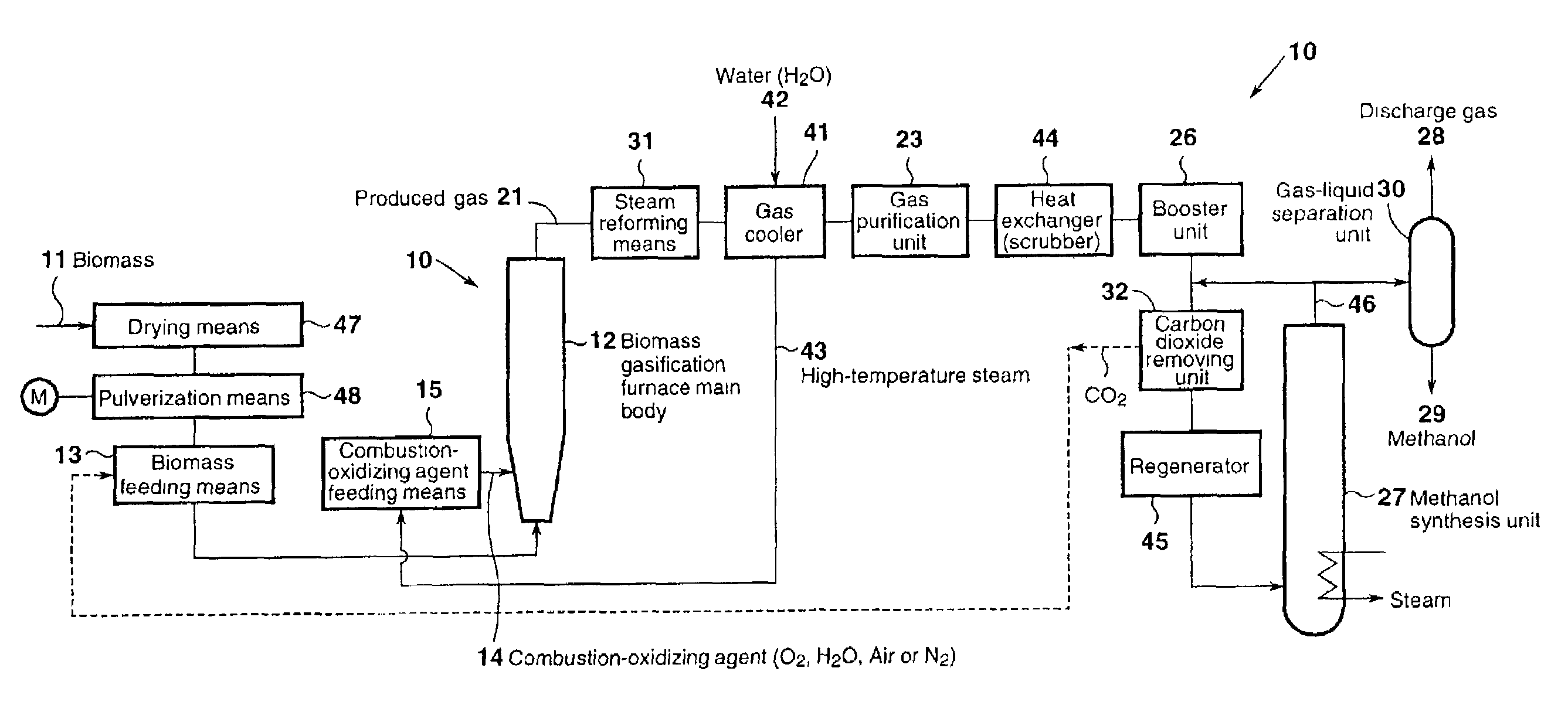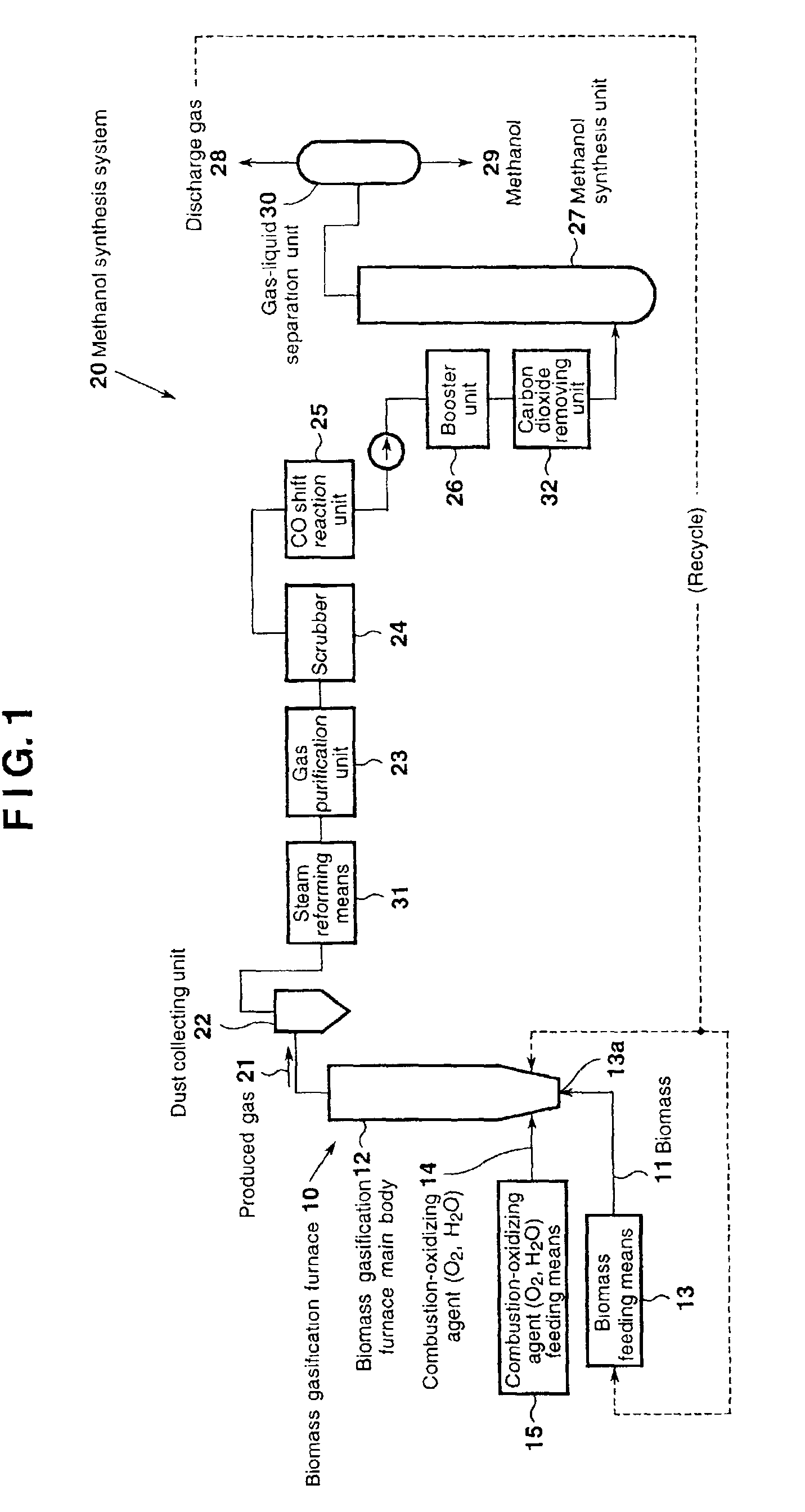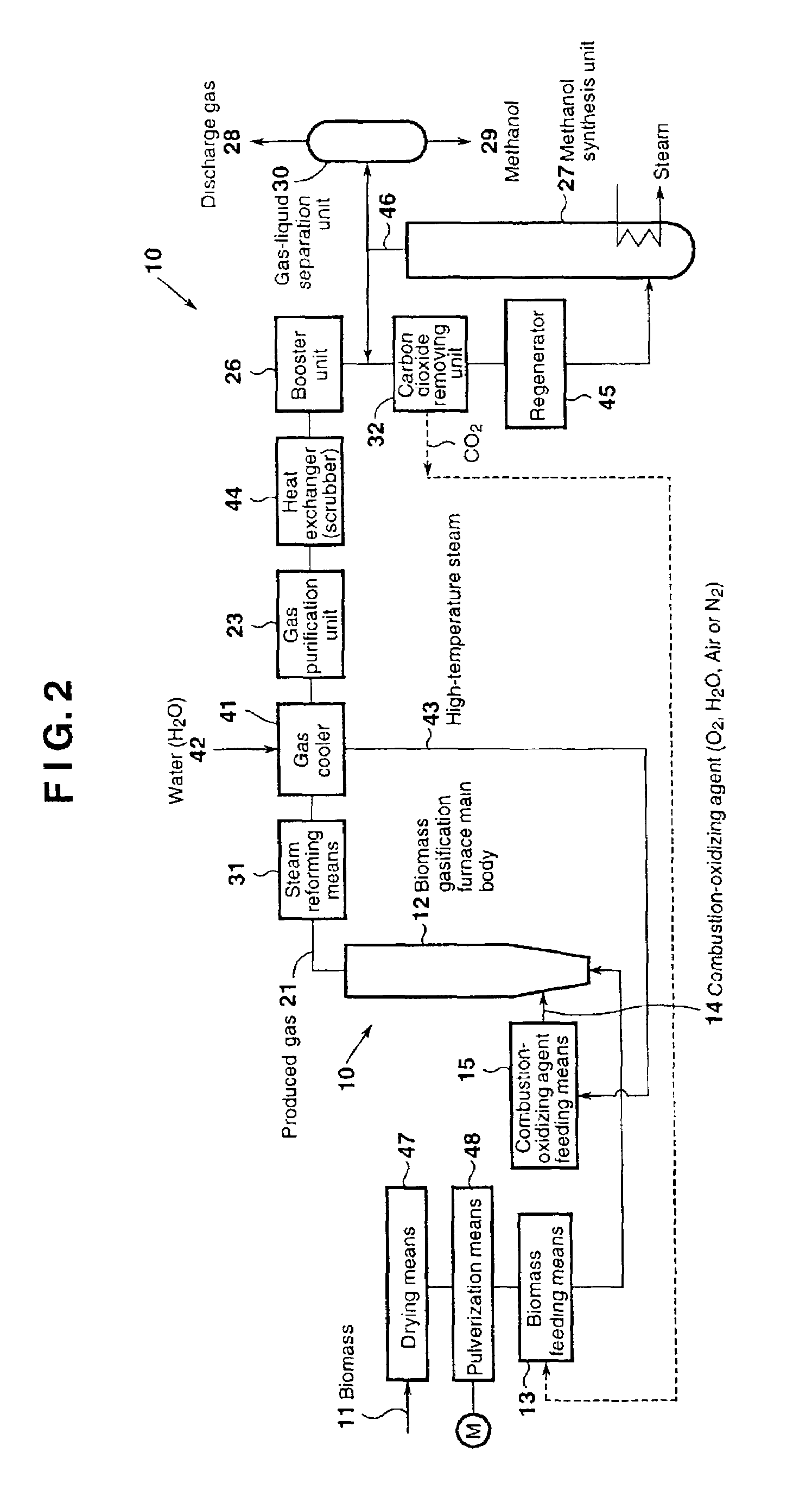Biomass gasifycation furnace and system for methanol synthesis using gas produced by gasifying biomass
a gasification furnace and biomass technology, applied in the direction of furnaces, physical/chemical process catalysts, combustible gas purification/modification, etc., can solve the problems of low biomass utilization, low yield, and thus produced gas cannot serve as a raw material for methanol synthesis
- Summary
- Abstract
- Description
- Claims
- Application Information
AI Technical Summary
Benefits of technology
Problems solved by technology
Method used
Image
Examples
tenth embodiment
[Tenth Embodiment]
[0283]A tenth embodiment will next be described with reference to FIG. 10.
[0284]FIG. 10 is a schematic diagram of a methanol synthesis system making use of a gas produced through gasification performed in a biomass gasification furnace according to the tenth embodiment.
[0285]Components having the same functions as those in the aforementioned methanol synthesis system are denoted by the same reference numerals, and repeated descriptions of such components are omitted.
[0286]As shown in FIG. 10, in the methanol synthesis system according to the tenth embodiment, the heat exchanger 44 for cooling the gas purified by the gas purification unit 26 and for removing moisture in the gas, comprises a water sprinkling means 44A for sprinkling water 76; and an alkaline water sprinkling means 44B for sprinkling alkaline solution 77 (e.g., NaOH). Heat recovery is carried out in a manner similar to that employed in the ninth embodiment, employing discharge water 71 resulting from ...
eleventh embodiment
[Eleventh Embodiment]
[0290]A eleventh embodiment of the present invention will be described with reference to FIG. 11.
[0291]FIG. 11 is a schematic diagram of a methanol synthesis system making use of a gas produced through gasification performed in a biomass gasification furnace according to the eleventh embodiment.
[0292]Components having the same functions as those in the aforementioned methanol synthesis system are denoted by the same reference numerals, and repeated descriptions of such components are omitted.
[0293]The methanol synthesis system according to the present embodiment includes a first adsorption column or guard column 78 provided between the aforementioned booster unit 26 and regenerator 45 in the methanol synthesis system; and a second adsorption column or guard column 79 provided between the aforementioned regenerator 45 and methanol synthesis unit 27.
[0294]The aforementioned adsorption columns are filled with a substance having adsorption capability, such as silica...
twelfth embodiment
[Twelfth Embodiment]
[0297]A twelfth embodiment of the present invention will be described with reference to FIG. 12.
[0298]FIG. 12 is a schematic diagram of a methanol synthesis system making use of a gas produced through gasification performed in a biomass gasification furnace according to the twelfth embodiment.
[0299]Components having the same functions as those in the aforementioned methanol synthesis system are denoted by the same reference numerals, and repeated descriptions of such components are omitted.
[0300]The methanol synthesis system according to the twelfth embodiment effectively utilizes H2 contained in discharge gas 28 which has been separated through gas / liquid separation of the gas 46 produced in a methanol synthesis unit 27.
[0301]As shown in FIG. 12, the produced gas 46 synthesized by the aforementioned methanol synthesis unit 27 is separated into methanol 29 and discharge gas 28 by means of a gas / liquid separation unit 30. Generally, the discharge gas 28 is fed bac...
PUM
| Property | Measurement | Unit |
|---|---|---|
| temperature | aaaaa | aaaaa |
| superficial velocity | aaaaa | aaaaa |
| pressure | aaaaa | aaaaa |
Abstract
Description
Claims
Application Information
 Login to View More
Login to View More - R&D
- Intellectual Property
- Life Sciences
- Materials
- Tech Scout
- Unparalleled Data Quality
- Higher Quality Content
- 60% Fewer Hallucinations
Browse by: Latest US Patents, China's latest patents, Technical Efficacy Thesaurus, Application Domain, Technology Topic, Popular Technical Reports.
© 2025 PatSnap. All rights reserved.Legal|Privacy policy|Modern Slavery Act Transparency Statement|Sitemap|About US| Contact US: help@patsnap.com



